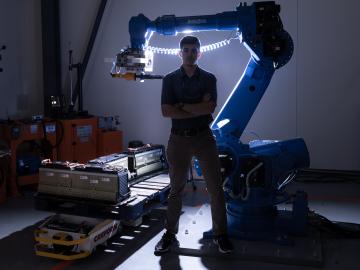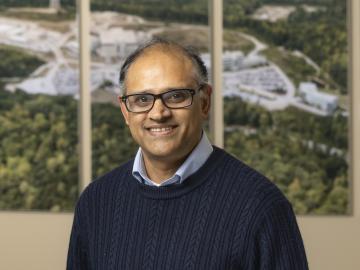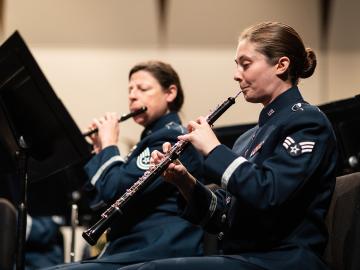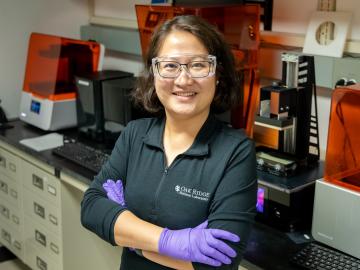
Filter News
Area of Research
- Advanced Manufacturing (2)
- Biology and Environment (5)
- Computer Science (1)
- Energy Science (38)
- Energy Sciences (1)
- Fusion and Fission (4)
- Fusion Energy (6)
- Isotopes (12)
- Materials (32)
- Materials for Computing (4)
- National Security (6)
- Neutron Science (5)
- Nuclear Science and Technology (9)
- Nuclear Systems Modeling, Simulation and Validation (1)
- Quantum information Science (1)
- Supercomputing (4)
News Type
News Topics
- (-) Advanced Reactors (15)
- (-) Cybersecurity (9)
- (-) Energy Storage (45)
- (-) Isotopes (18)
- (-) Microscopy (22)
- (-) Nanotechnology (18)
- (-) Physics (20)
- (-) Space Exploration (10)
- 3-D Printing/Advanced Manufacturing (47)
- Artificial Intelligence (25)
- Big Data (29)
- Bioenergy (40)
- Biology (48)
- Biomedical (24)
- Biotechnology (11)
- Buildings (31)
- Chemical Sciences (22)
- Clean Water (21)
- Composites (14)
- Computer Science (56)
- Coronavirus (17)
- Critical Materials (14)
- Emergency (1)
- Environment (88)
- Exascale Computing (4)
- Fossil Energy (1)
- Frontier (4)
- Fusion (18)
- Grid (29)
- High-Performance Computing (23)
- Hydropower (8)
- Irradiation (2)
- ITER (4)
- Machine Learning (24)
- Materials (45)
- Materials Science (49)
- Mathematics (8)
- Mercury (7)
- Molten Salt (5)
- National Security (20)
- Neutron Science (37)
- Nuclear Energy (35)
- Partnerships (4)
- Polymers (15)
- Quantum Computing (6)
- Quantum Science (16)
- Security (8)
- Simulation (17)
- Statistics (1)
- Summit (10)
- Transportation (48)
Media Contacts

Madhavi Martin brings a physicist’s tools and perspective to biological and environmental research at the Department of Energy’s Oak Ridge National Laboratory, supporting advances in bioenergy, soil carbon storage and environmental monitoring, and even helping solve a murder mystery.

Mike Huettel is a cyber technical professional. He also recently completed the 6-month Cyber Warfare Technician course for the United States Army, where he learned technical and tactical proficiency leadership in operations throughout the cyber domain.

It was reading about current nuclear discoveries in textbooks that first made Ken Engle want to work at a national lab. It was seeing the real-world impact of the isotopes produced at ORNL

After being stabilized in an ambulance as he struggled to breathe, Jonathan Harter hit a low point. It was 2020, he was very sick with COVID-19, and his job as a lab technician at ORNL was ending along with his research funding.

Mirko Musa spent his childhood zigzagging his bike along the Po River. The Po, Italy’s longest river, cuts through a lush valley of grain and vegetable fields, which look like a green and gold ocean spreading out from the river’s banks.

An advance in a topological insulator material — whose interior behaves like an electrical insulator but whose surface behaves like a conductor — could revolutionize the fields of next-generation electronics and quantum computing, according to scientists at ORNL.

ORNL scientists found that a small tweak created big performance improvements in a type of solid-state battery, a technology considered vital to broader electric vehicle adoption.

Having passed the midpoint of his career, physicist Mali Balasubramanian was part of a tight-knit team at a premier research facility for X-ray spectroscopy. But then another position opened, at ORNL— one that would take him in a new direction.

Growing up in suburban Upper East Tennessee, Layla Marshall didn’t see a lot of STEM opportunities for children.
“I like encouraging young people to get involved in the kinds of things I’ve been doing in my career,” said Marshall. “I like seeing the students achieve their goals. It’s fun to watch them get excited about learning new things and teaching the robot to do things that they didn’t know it could do until they tried it.”
Marshall herself has a passion for learning new things.

Growing up in China, Yue Yuan stood beneath the world’s largest hydroelectric dam, built to harness the world’s third-longest river. Her father brought her to Three Gorges Dam every year as it was being constructed across the Yangtze River so she could witness its progress.


